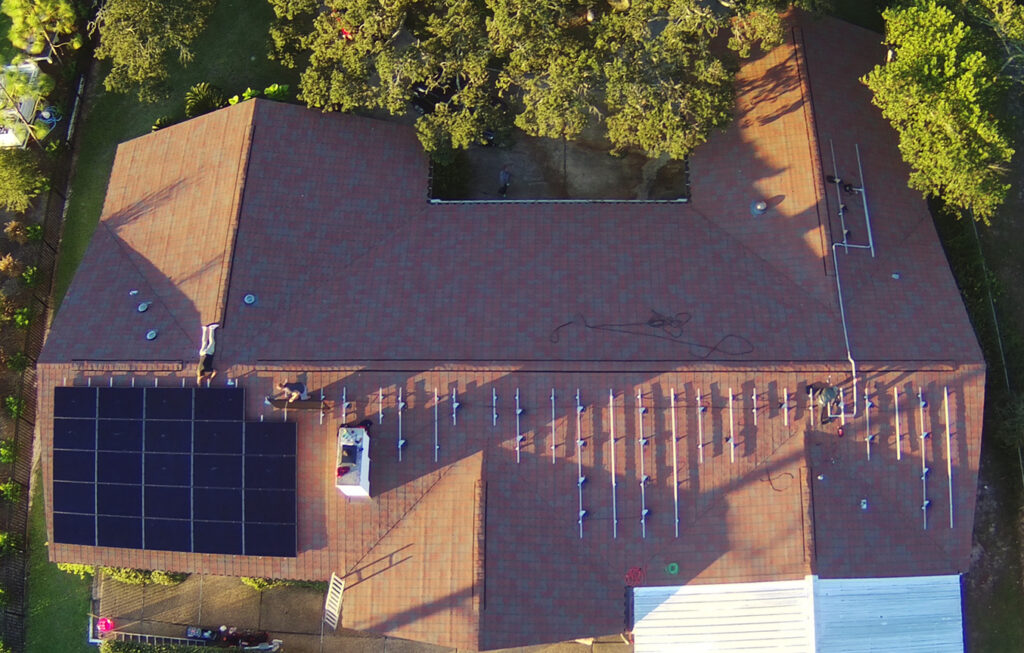Solar Power Payment Guide for Homeowners
The transition to solar energy represents not only a move towards a more sustainable lifestyle but also offers the promise of reduced utility bills and independence from the grid. For homeowners the decision to install solar panels and battery systems is becoming increasingly straightforward thanks to a variety of payment methods designed to suit different financial situations. In this article, we explore the pros, and minimal cons, of three primary payment options: cash purchases, financing, and Power Purchase Agreements (PPA).
Cash Purchase: The Direct Route to Solar Ownership
A cash purchase of solar panels is the most straightforward payment method, where you pay the full price upfront, instantly becoming the owner of the system. This approach eliminates the need for loans or monthly payments, offering immediate savings on your energy bills.
Pros:
- Immediate Ownership: Paying cash for your solar system means you own it outright from day one, allowing you to benefit directly from all incentives, rebates, and any electricity generated.
- Maximized Savings: Without the overhead of loan interest, cash purchases ensure that all savings generated by the system go directly into your pocket.
- Increased Home Value: Solar installations have been shown to increase property values, and paying upfront can make this investment even more attractive to future buyers.
- Tax Incentives: Homeowners in our focus states can take advantage of specific tax breaks, such as the federal solar investment tax credit, reducing the overall cost of the system.
Cons:
- Upfront Investment: The primary challenge with cash purchases is the initial cost, which can be substantial, though tax incentives and rebates can help mitigate this.

Cash Purchase Scenario: A homeowner in South Carolina chose a cash purchase for their solar installation, taking advantage of state-specific tax credits and the federal solar investment tax credit, significantly reducing the system’s net cost. The system could pay for itself in under 7 years through utility bill savings.
Financing: Making Solar Accessible
Financing your solar system involves taking out a loan to cover the cost of the installation, which you then pay back over time through monthly payments. This method makes solar accessible without requiring a large initial investment, spreading the cost over several years.
Pros:
- Accessibility: Financing breaks down the cost barrier, allowing homeowners to install solar systems without a large upfront investment.
- Flexible Terms: Solar loans often come with favorable terms, including low-interest rates and various repayment periods to fit different budgets.
- Retain Incentives: Like cash purchases, financed systems are owned by the homeowner, meaning you still qualify for tax credits and rebates.
- Immediate Savings: In many cases, the monthly loan payment is less than the monthly savings on your electricity bill, meaning you could start saving money immediately.
Cons:
- Interest Costs: While financing makes solar accessible, you will pay more over the life of your system due to interest.

Financing Purchase Scenario: A homeowner in Florida may finance their solar system with a 25-year loan. Despite the interest, the reduction in their monthly energy bill was greater than their loan payment, effectively creating instant net savings.
Power Purchase Agreement (PPA): Low Commitment Solar
Under a Power Purchase Agreement (PPA), you agree to allow a provider to install solar panels on your property at no upfront cost to you. Instead of buying the system, you purchase the power it produces at a predetermined rate, typically lower than the utility price, for a set contract term. Think of this like leasing a car but with solar.
Pros:
- No Upfront Costs: PPAs require no investment from the homeowner. Instead, you agree to purchase the power generated by the system at a set rate, often lower than the utility rate.
- Maintenance and Repairs: The PPA provider is responsible for the system’s maintenance and repairs, reducing the homeowner’s responsibility.
- Flexibility: PPAs can be an excellent option in areas where net metering policies are less favorable, as the homeowner does not need to rely on selling excess power back to the grid.
Cons:
- Limited Financial Benefits: Since the homeowner does not own the system, they cannot take advantage of tax credits or rebates.

PPA Scenario: In Georgia, where net metering returns are less competitive, a homeowner may opt for a PPA. They can enjoy immediate savings on their electricity bills without any upfront cost and without the need to navigate the complexities of net metering agreements.
Solar Investment: A Closer Look at Financial Impacts
Investing in solar energy is not just about choosing a payment method; it’s about understanding the broader financial landscape, including incentives and the long-term benefits of each option.
The Role of State Incentives and Tax Breaks
Considerations:
- Federal Solar Investment Tax Credit (ITC): Across the board, homeowners can benefit from the ITC, which allows for a deduction of a portion of the cost of installing a solar energy system from federal taxes. This significant incentive can dramatically lower the overall cost of solar installation, regardless of the chosen payment method.
- State-Specific Incentives: In Florida, for instance, solar installations are exempt from sales tax, which can result in considerable savings. Georgia offers various financing options and programs to promote solar energy, such as the Georgia Solar Program. South Carolina, known for its generous tax credits for solar energy, allows homeowners to deduct a substantial portion of their installation costs from state taxes, making solar installations especially attractive.
These incentives play a pivotal role in the financial planning of your solar project. They not only reduce the upfront cost but also enhance the return on investment over time, making solar energy more accessible and appealing to homeowners.
Long-Term Financial Considerations
Considerations:
- Energy Savings Over Time: One of the most compelling arguments for solar energy is the potential for long-term savings on utility bills. Over the lifespan of a solar panel system (typically 25 to 30 years), homeowners can save tens of thousands of dollars, depending on their system’s size and energy consumption patterns. These are conservative numbers considering many panels can last 40 years.
- Protection Against Rising Energy Costs: Solar panels offer a hedge against fluctuating and increasing energy prices. By locking in electricity rates with solar panels or a PPA, homeowners can protect themselves from unpredictable increases in utility costs.
- Impact on Home Value: Studies have consistently shown that homes equipped with solar energy systems boast higher property values and attract buyers more quickly than non-solar homes. This increase in home value further offsets the initial investment in solar technology, whether through cash, financing, or a PPA.

Enhancing Your Solar Journey with the Right Payment Method
Choosing the right payment method for your solar installation is crucial, but understanding the broader financial and economic context is equally important. Here are additional factors to consider:
Maintenance and Operational Costs: Beyond the initial installation, solar energy systems require minimal maintenance, which should be factored into the long-term financial planning. For homeowners choosing a PPA, maintenance is typically covered by the provider, offering peace of mind and additional financial benefits.
Navigating Financial Options: For those considering financing, it’s essential to compare different loan products. Interest rates, loan terms, and early repayment options can vary widely and impact your overall financial benefits. Seeking advice from financial advisors or solar financing experts can help tailor the financing option to your specific needs and circumstances.
Environmental Impact and Sustainability: Beyond the financial aspects, investing in solar energy contributes to a more sustainable and environmentally friendly energy landscape. Reducing reliance on fossil fuels and lowering carbon footprints are critical considerations for many homeowners, adding another layer of value to the decision to go solar.
Conclusion: Empowering Homeowners Through Informed Decisions
The journey to solar energy adoption is unique for every homeowner, influenced by individual financial situations, energy needs, and environmental values. By carefully considering the pros and cons of cash purchases, financing, and PPAs, alongside the available tax incentives and long-term financial benefits, homeowners can make informed decisions that align with their financial goals and sustainability aspirations.
As the solar industry continues to evolve, so too will the opportunities and incentives for homeowners to harness the power of the sun. The key to maximizing the benefits of solar energy lies in thorough research, careful planning, and choosing the payment method that best fits your financial landscape, ensuring that the sun’s abundant energy translates into tangible benefits for years to come.


